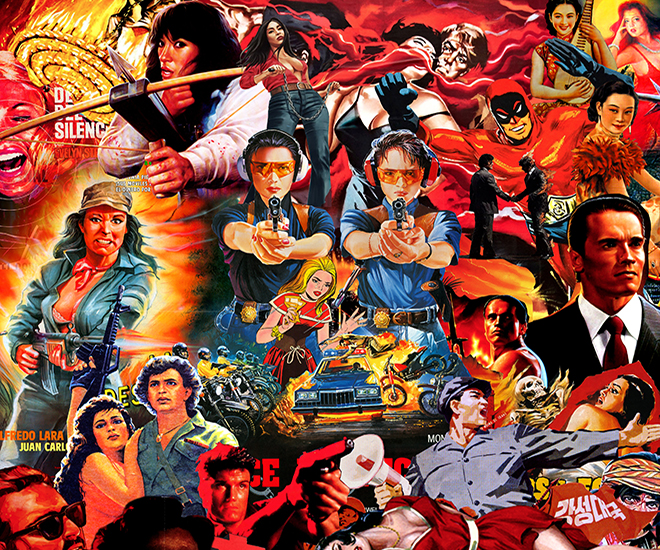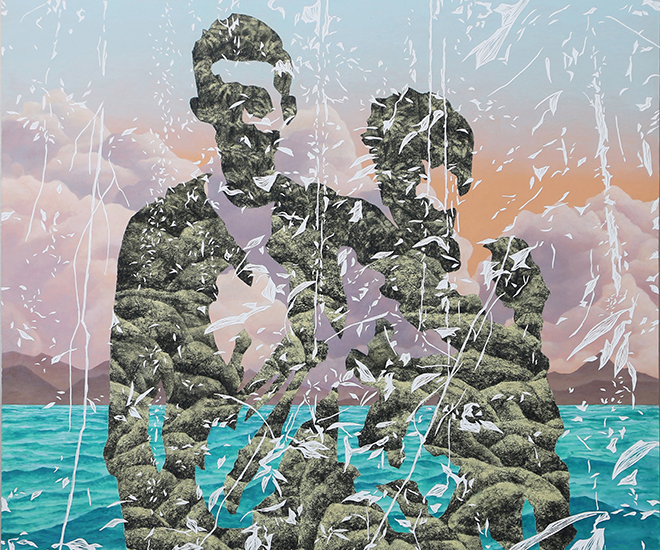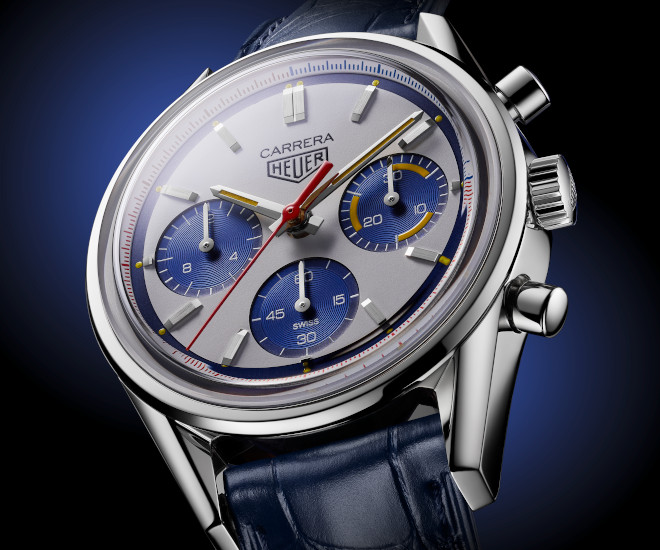From Hatebeast to Hypebeast: Lawsuits and 30 years later, Streetwear has overtaken Louis Vuitton and Gucci
30 years ago, big brands like Gucci and Louis Vuitton were suing creators of “bootleg” streetwear with their motifs, today, they’re working with these designers

Tailor Daniel Day aka Dapper Dan was a streetwear pioneer when he incorporated luxury brand motifs by creating “bootleg” fur jackets by adapting branded garment bags, sparking a commercially successful trend. He was eventually sued, his store closed and today, we have come full circle with Gucci paying homage to his original 80s creation. He appears in NYT as a result.
It’s official, the luxury industry is at a cross-roads – from big watch conglomerates struggling to find their footing to big fashion brands collaborating with small counter-culture brands for survival and relevance, luxury brand Chief Executives are going to find themselves asking one crucial question – in an industry steeped in heritage, tradition and classicism, how does one look forward without betraying these very values? More importantly, how do brands ensure commercial survival by appealing to a younger generation of shoppers without alienating the old guards?
But first, we need to understand the definition of the phenomenon we’re are about to explore. What is a hypebeast? According to the Urban Dictionary, It is a person who follows a trend to be cool or in style. A person who wears what is hyped up, collecting clothing and accessories for the sole purpose of impressing others.
Born from East-Coast (that is to say Californian) Skate and Surf culture, Streetwear began its roots with basics tees and denims eventually dressed with graphic logos and motifs pioneered by brands like Japanese A Bathing Ape and Supreme. Thus, with the now obvious synergy between prestige branding and prominent (if satirical) labelling, one can start to understand why the blending of cultures between streetwear and high fashion was inevitable.
From Hatebeast to Hypebeast: Lawsuits and 30 years later, Streetwear culture has overtaken Louis Vuitton and Gucci
On 19 January 2017, Guy Trebay opined in the New York Times that “Maybe Louis Vuitton Should Have Stayed Enemies with Supreme” – He recalled a lawsuit in 2000 when Louis Vuitton sued Supreme with a cease-and-desist order when the streetwear label spoofed the Louis Vuitton monogram on their skateboard deck. Little would they know that slightly under 20 years later, Louis Vuitton would be willingly surrendering their precious brand DNA and voluntarily joining prestige wear with devil-may-care streetwear in their latest Louis Vuitton men’s Fall Winter 2017 collection.
Cultural appropriation? Culture War? Or Just plain Culture? A Brief History on Streetwear’s influence on Fashion
In the 1980s, a designer from the streets of Harlem became notorious for his streetwear looks – Daniel Day, better known as Dapper Dan, was a legendary tailor who would make bespoke pieces for his rapper and athlete clientele with logos from many of the big fashion brands. His designs were of such popularity with the likes of Olympic sprinter Diane Dixon (and other notable entertainment celebrities) that his boutique was eventually sued out of existence in 1992.

Gucci Cruise 2018 collection. Image: Gucci instagram
26 years later, Gucci dropped a look in their Cruise 2018 collection which appeared to have been ripped off a design by the Harlem tailor and many on the internet were quick to pounce on the fashion house including sprinter Dixon for whom Dapper Dan had famously created the puffy sleeved fur jacket with Louis Vuitton monogram (rather than the interlocking Gucci Gs).
“Give credit to @dapperdanharlem He did it FIRST in 1989!” – Diane Dixon on Instagram
In response to the internet ire, Gucci released a statement – “Gucci’s ‘new Renaissance’ cruise 2018 fashion show included references to periods of revitalization spanning many different eras, in particular the European Renaissance, the ’70s and the ’80s. The collection also saw a continuation of Alessandro Michele’s exploration of faux-real culture with a series of pieces playing on the Gucci logo and monogram, including a puff-sleeved bomber jacket from the 1980s in an homage to the work of the renowned Harlem tailor Daniel ‘Dapper Dan’ Day and in celebration of the culture of that era in Harlem.”

Indeed, the Alessandro Michele had tagged him on Instagram after failing to get in touch with Dan in an instagram caption saying: Inside the #GucciCruise18 collection by #AlessandroMichele, a look that celebrates an iconic style of hip-hop fashion culture from the 80s—a plush jacket featuring puffy sleeves monogrammed in GG motif. Legendary tailor Dapper Dan @dapperdanharlem influenced the trend by making such custom pieces for his rapper and athlete clients out of logos from famous fashion houses, including #Gucci. In a homage to Dapper Dan, this jacket worn with jeans and a lurex headpiece is flanked with a striped knit with cross-stitch embroidery, cotton shorts and a georgette gown with trompe l’oeil details.
As THE original “influencer” (today, a derogatory term describing wannabe instagram “bloggers”), so powerful was Dan’s vision that in the 10 years he operated Dapper Dan’s Boutique, he turned a tidy profit upcycling garment bags from Gucci, Louis Vuitton and Fendi which he then cut and tailored into bespoke fur coats and sharp suits. At the height of its popularity, Dan started to offer his custom skills to auto-detailing with services to brand cars with the monograms and logos of upscale fashion brands. It was a look which travelled by word of mouth and walking advertisements (his customers) which caught the attention from rappers to the most unsavory of characters – in an act of true counter-culture, Dapper Dan had appropriated luxurious symbols of wealth for the consumers who wouldn’t otherwise be able to afford it (NYT has an excellent profile piece on Daniel Day, do check it out). That said, while it appears that his “pirated” style of art would eventually be adopted by the likes of Balenciaga, Louis Vuitton and Gucci, the truth is, the fashion world has often been finding inspiration in the street.


To Gucci’s benefit, the lessons of history are not lost upon them (as befitting a bonafide heritage brand), rather than sue New York Artist Trevor “Trouble” Andrew into oblivion for selling fake GucciGhost items, Alessandro Michele co-opted the artist into the brand, launching GucciGhost as a capsule collection in 2016. For Cruise 2018, Gucci’s Michele also out-pirated the pirates with dodgy-misspellings on their faux Gucci products by adopting the “GUCCY” label on genuine Gucci products – what are the pirates going to do? Sue? It was a move that was incredibly meta and undeniably street; 10 years ago, no one would ever have thought that a fashion brand would ever be capable of winning a street-fight.
And yet, why should it surprise anyone that the fashion world has been finding inspiration and muse in everyday things? Largely cyclical, Louis Vuitton’s take on the “China” shopping Bag (so named for the Chinese immigrants who used them to carry wares around) in 2007 found a new interpretation in Balenciaga this time, trolling the fashion world with their Thai shopping bag (commonly seen in Bangkok were shoppers at the various Thai market would carry their.. you get the point).

Pictured left: Louis Vuitton shopping bag. Right; “Chinatown” shopping bag popularised by Chinese immigrants
2001: A collision course between Louis Vuitton and Streetwear
How does a heritage malletier that is trunk-maker become a collaborator with a streetwear brand infused with the edgy rebellion of skateboard indie culture? Slowly. In 2001, then Creative Director Marc Jacobs presided over one of the most non-Louis Vuitton eras in the history of the maison. Jacobs started to work with designers like Stephen Sprouse, Murakami and Yayoi Kusama to re-interpret and get creative with the brand’s signature motifs. Right up till that point, any alteration or perceived “denigration” of the logo was a big no no in accordance with branding principles but Jacobs managed to convince his bosses and the result was a Louis Vuitton reborn for a younger audience, no longer the domain of wealthy white ladies of leisure; reportedly, Louis Vuitton made US$300 million from the collaboration and the maison realised: hey, if it ain’t broke, why fix it?

Marc Jacobs with Murakami at the launch of the Cherry World

The Cherry World of Takashi Murakami, a collaboration with Louis Vuitton
Kim Jones is likely the most influential designer you’ve never heard of. Handling high street and high fashion with equal panache is not a skillset that many designers are capable of. A streetwear enthusiast and collector, Jones, a MA graduate of Central Saint Martins, first unveiled his namesake label in 2003 with a collection inspired of 90s rave culture – the sort of underground counter-culture adjacent with the skateboarding, underground party attending crowd. The year after, Umbro by Kim Jones was his foray into sportswear where he pioneered the concept of “athleisure” – a major pillar of streetwear philosophy – garments meant for skateboarding and active living – designer sneakers and fashion pump paired with playful prints added street flair to once unfashionable sporting attire. By 2006, he was awarded Menswear Designer of the Year Award by the British Fashion Council, with his various looks: suits with sneakers, athleisure tracksuits and puffer coats, he was telegraphic his passion for streetwear from high street to high fashion. When Kanye West was launching clothing line Pastelle in 2008, Jones too headed that project – neon colours and flair, signature of Kanye’s sartorial sensitives were capably demonstrated by Jones. Like Dapper Dan, having an A-list hip hop performer wearing you swag is 100 points on the street-cred-meter. Leaving his position as Creative Director at Dunhill, Kim Jones joined Louis Vuitton in 2011. There he parlayed his deft touch with punk, hype and culture by working with Kiro Hirata – adding an artisanal touch to streetwear through the Japanese craft of patching denim or boro. Jones’s international jetset outlook with childhood from Botswana to Tanzania allow him the advantage of a plethora of motifs which African-American cultures would find attractive. After Hirata, Jones worked with Hiroshi Fujiwara, incorporating more streetwear elements into Louis Vuitton.
“I take the DNA of the brand and infuse it with something else to create excitement, some critics say that I’m just jumping on the bandwagon, but actually I’m not, it’s always been part of my DNA.” – Kim Jones to South China Morning Post

mrkimjones instagram: Louis Vuitton X Fragment coming soon @fujiwarahiroshi photographed by #pieterhugo
The critical debate on the joining of streetwear label and luxury brand is heated; thus LUXUO decided to speak to Mark Sabotage, a prominent Singaporean sneaker artist and streetwear aficionado about the debate surrounding the blurring of lines between street and high fashion.
“There used to be a clear line between luxury and street which then became blur and now it’s almost non existent. With this collaboration, it’s now evident. To me, this is a real mark in the history books when street culture rose to power, much like how hip hop became the soundtrack of white america slowly in the early 2000s and especially when Eminem was created.” – Mark Sabotage aka SBTG
So you don’t think it’s selling out? Isn’t this culture about individuality and independence (if not rebellion)?
Supreme runs 20+ years deep and the people who where in the start of such cultures all grew up to be some one of power in whatever industry they are in. And i would think Kim Jones is part of this culture. So to me, its a natural progression.
The world is changing, batons are passed , and young people are more in power now vs 20 years back. So many ‘old’ brands wanna project a younger image now.

Gone is the brown Louis Vuitton signature colourway and in comes the distinct red Supreme colour scheme.
Doesn’t this benefit LV commercially and hurt Supreme in terms of street cred?
I personally don’t feel so. There used to be a clear line between luxury and street which then became blur and now it’s almost non existent. With this collaboration, it’s now evident. To me, this is a real mark in the history books when street culture rose to power, much like how hip hop became the soundtrack of white america slowly in the early 2000s and especially when Eminem was created.
So this isn’t about rich people branded labels vs. non-conformist street skateboarders – this is more like the natural evolution of two cultures joining together, there never was a “culture war” to begin with?
Yes, it’s my observation since I became a part of the culture since day 1. Some consumers may take it personally and feel betrayed but truly, history happens anyway with or without your consent. Kim Jones has deep street culture background and now he has risen to power and with it, the right to call the shots. Skateboarding has contributed to fashion more than everyone thinks. Streetwear mocked luxury in many ways in the 90s, made spoofs. Skateboarding is the genesis of so many things, Vans shoes has skate roots and now the world is wearing them.

Mr. Sabotage’s own ‘Charlie 101’ cargo tote adapted from a vintage postal and a Birkin bag.
To get the perspective on the fashion side of things, LUXUO spoke to Jasmine Tuan, Creative Director at Brandmama Pte Ltd and Co-founder at FrüFrü & Tigerlily to hear what she thinks of the Louis Vuitton x Supreme collaboration.
Brands are playing strong to keep themselves relevant. – Jasmine Tuan, Brandmama Pte Ltd
Who do you feel it benefits more? Louis Vuitton or Supreme?
It is similar to H&M x Margiela, Marni, Balmain; Collaboration is another way to create hype, media buzz which in turn converts to hype and profit.

Jasmine Tuan, Creative Director at Brandmama Pte Ltd and Co-founder at FrüFrü & Tigerlily; She was also Managing Director of the now defunct but critically successful Blackmarket
But if profit is the objective, what happens to street cred?
In order to sustain any brand, you need money and cash flow. When is the last time a Supreme fan bought a Supreme item? When is the last time an LV fan bought an LV item?
Although both brands have strong following, people might stop going in to a Supreme or LV boutique to shop for their usual range or follow their new collection, but would go visit the brands again for such collaboration since there is a new reason to buy something new and limited.
Some even see it as investment as they know prices will go up and they can fetch profit and returns. It’s a clever move to stir media buzz and sales. Limited editions have been proven to work – H&M collaborations Balmain, Marni, Margiela, Valentino are all snapped by Day one. Today, people are still selling them at a higher price whether it’s worn once or new., simply because you can’t get it in the market anymore.
So the whole point of “counter culture” street wear is irrelevant? There’s no more rebellion? The brands have won?
It still exists and is very much relevant. Just that a few of them who still have minds of their own and are not affected by social media hype. Brands are playing strong to keep themselves relevant.

Louis Vuitton sued Supreme to stop production and sale of the LV skateboard deck. It is noteworthy that instead of the brown colour palette, Louis Vuitton has now adopted Supreme’s red colourway instead. Also, an original 2000 Supreme LV deck just sold on eBay for $10,000. Beat that with a stick.
The need to Appeal to the Younger Generation is not Unique to Fashion, the Watch Industry is also undergoing upheaval and renewal
Indeed, targeting the next generation (if not a younger generation) of well-financed consumers is not a phenomenon unique to the fashion industry. The watch industry is also just finding its way out of one of the longest periods of market contraction in recent history.

In 2016, Patek Philippe set tongues wagging when they released the most “unlikely Patek Philippe watch” ever – the Calatrava Pilot Travel Time Ref. 5524. According to CEO Thierry Stern, the new novelty was meant to draw attention from a generation of new watch consumers who were “not interested in their father’s watch”, though the brand drew some flak for its close similarity to another manufacture’s offering, the Calatrava Pilot Travel Time was a commercial success, so much so that this year, Patek Philippe launched the US only limited edition 5522A Pilot’s Calatrava as part of the celebrations for the Art of Watchmaking Grand Exhibition. And it’s not just Patek Philippe, brands like Corum are also starting to appeal to a younger audience with fun Bubble watches and collaborations with designers.

Truth is, whatever the commercial realities are in whichever industry, there will always be a clarion call for “honesty” and a rootedness in the brand. For now, in a highly cynical marketplace, there is no doubt that collaborations are commercial successes. But it remains to be seen if collaborations are the way forward, after all, there’s still a demand for authenticity. Sure, there will be demand for Supreme for Louis Vuitton items but there’s a good chance your purist streetwear aficionados who typically queue outside Supreme’s flagship in New York are not the same people who are in line at Vuitton stores. These rebels make an unhyped product “hype” by virtue of their power as trendsetters rather than trend-followers, they alone stand as templars to the concept of street credibility.
That said, we live in a very unique age where the big brands have stopped hating the hypebeast and embraced them; Yet, the hypebeast stands separate from a new creature – the Hautebeast; this Hautebeast is in all of us (at least lovers of luxury goods and prestige products).









